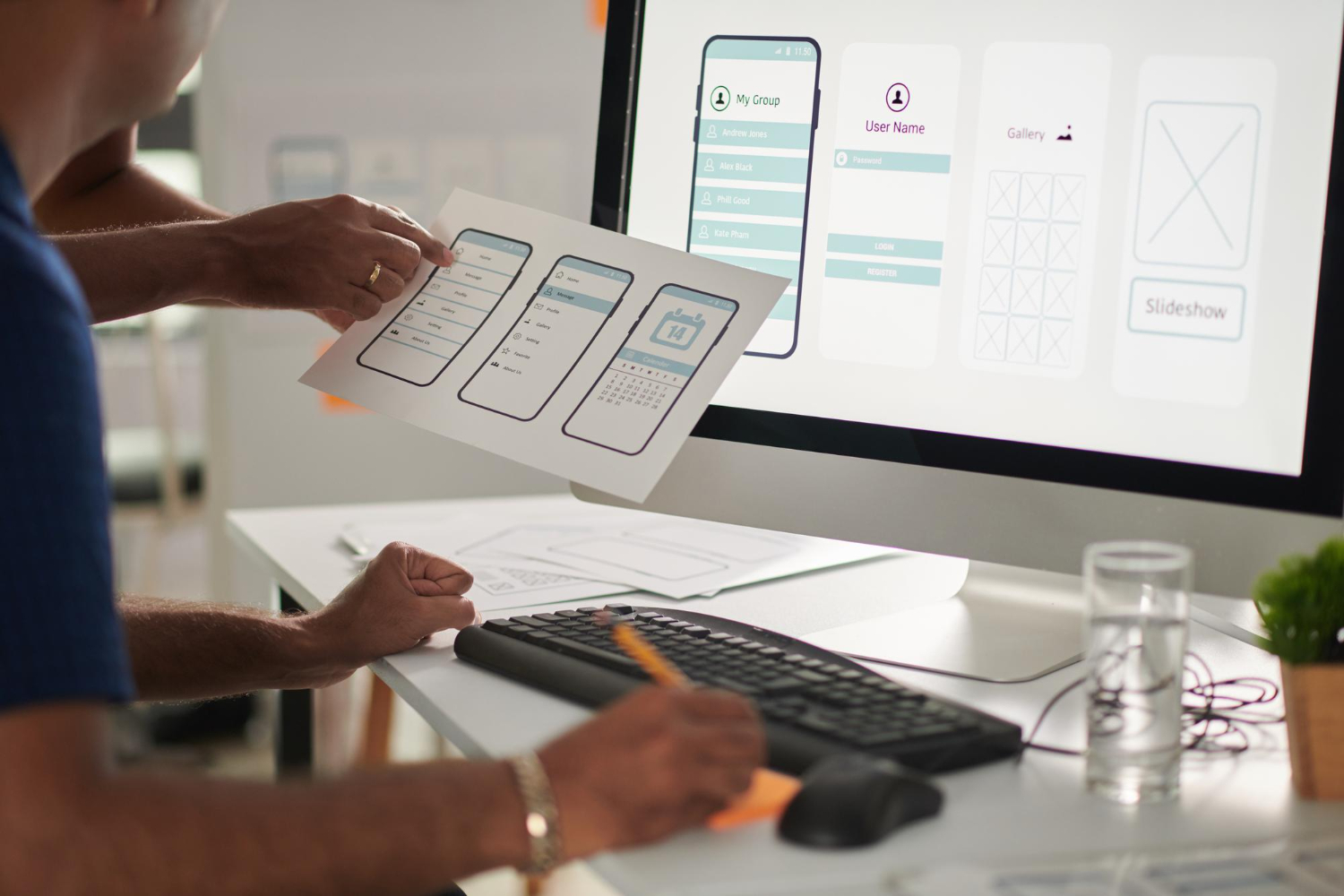Welcome to the UI/UX Designer Advanced Co-Op Specialization program, an advanced level of education designed to equip students with the specialized skills required to excel in the field of user interface and user experience (UI/UX) design. This program is an ideal choice for those who aspire to design interactive software products for web and mobile applications at the highest professional level.

DURATION
Academic Education (Part-time Work Permit)
Paid Co-op (Full-time work permit)
Our article about the 5 steps to become a UX designer will give you some tips to support your career. Each individual in-class and online UI/UX design course will help students to master the following skills below:
In our Advanced UI/UX Design Specialization, you’ll delve deep into the intricacies of UI/UX design, equipping you with the knowledge and skills required to thrive in the ever-evolving world of digital design. Here’s a glimpse of what you’ll learn:
With our Advanced UI/UX Design Specialization, you’ll unlock a world of possibilities, combining advanced design skills with business acumen to create exceptional user experiences and innovative digital products.
In this course, the students learn about how to use applications (like web or mobile applications) usage by users to inform and improve user experience using tools and techniques such as Google Analytics.
At the end of the course, the students will be knowledgeable about:
This course provides some technical foundations for designing high-fidelity prototypes using web applications. The course covers both technical challenges of developing web applications and evaluating web applications from UI/UX perspectives such as vertical and horizontal prototyping.
At the end of the course, the students will be knowledgeable about:
UI/UX designs are informed and impacted by the product decision made by the product manager. It is beneficial if the UI/UX designer can understand the reasoning behind such products decisions. This course is an introductory course to product management and responsibilities of product management and particularly the communication between the product manager and the UI/UX designers.
At the end of the course, the students will be knowledgeable about:
Many software development companies adopt agile methodology in developing their products. While developers are trained in subjects regarding Agile development like lean product design and scrum, the designers do not usually receive such training and therefore they become a bottleneck in the product development cycle and many Agile books suggest replacing a non-agile designer with a non-designer who knows how to work in an agile environment. This module is one of the core topics to become an expert UX designer.
At the end of the course, the students will be knowledgeable about:
This module introduces core topics in digital marketing that could help UI/UX designers better design products. Also, the course covers some core topics in digital marketing such as SEO, content strategy, content creation and content distribution.
At the end of the course, the students will be knowledgeable about:
UI/UX and product designers work very closely with the business team. Understanding the core business topics will help the designers a lot in designing the company’s product. The course covers topics such as business model, value propositions, user segmentations, brand promise, minimum-viable-product (MVP) and design for MVP.
At the end of the course, the students will be knowledgeable about:
This is a second project course of the program. While the first project course only focuses on UI/UX design in product design, this second-course project is a more comprehensive project where the student will work in a group and will go through different stages of product design from business, product and UI/UX design perspectives.
At the end of the course, the students will be knowledgeable about:
Positions For UI/UX Designers
Studying UI UX design courses in Canada will assist you to achieve your career goals. After learning how to create a stunning UX design portfolio with tips & examples during their project classes, students in UI/UX design diploma co-op programs in Vancouver will have brilliant opportunities to get hired in Canada.
Please follow job positions for UI/UX designers below:
UX consultant / UX researcher / Interface designer / User Experience officer / Design manager / Product designer / Communication designer
Average user experience designer’s yearly salary in Canada C$66,566

** Students are required to have their personal computer
Check what our student’s squad say about us
| Winter | Jan 29th, 2024 |
| Spring | May 27th, 2024 |
| Fall | Oct 1st, 2024 |
The main difference between UI and UX design; while UI design focuses on the interface and visual guidance of the product, UX design aims for users to have the best experience on the product.
UX Designer’s Responsibilities
UI Designer’s Responsibilities
Absolutely, you can choose your learning method. Students can join our online UI/UX design courses and they can feel comfortable attending classes in person as well.
It is totally depending on your personal, communication, and industry-related skills. Students in the UI UX Design Co-op Diploma Program can earn 17.50CAD/per hour on average.
Yes, your co-op work must be paid if you would like to count your work as a co-op work experience.
Yes, you can absolutely extend your program. In fact, we encourage our students to study multiple diploma programs as they can expand their knowledge and expertise to find better jobs in Canada.